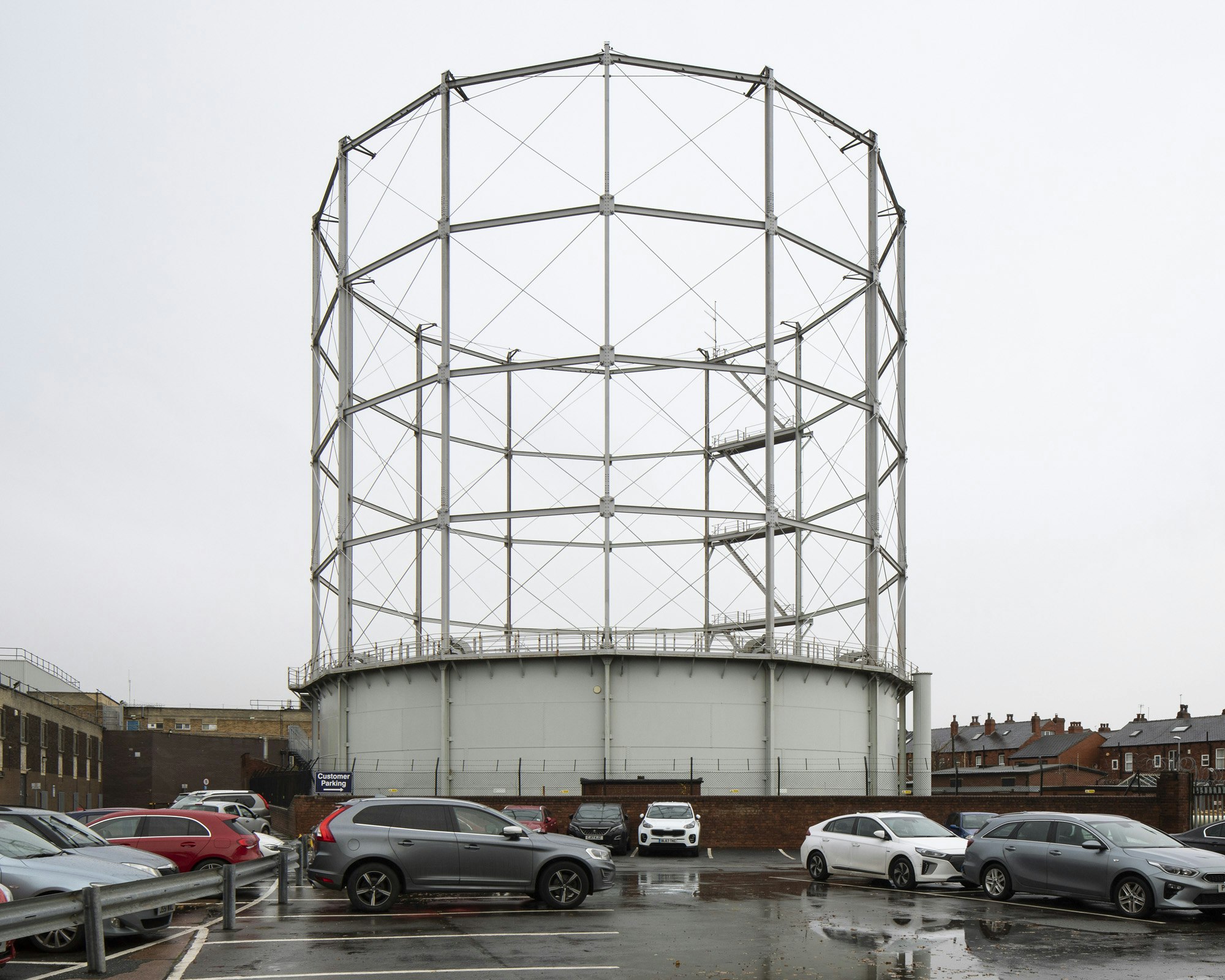Sebastian Fry: Disappearing Giants
Gasholders have been a distinctive feature of the urban landscape since Victorian times. They were the most prominent landmarks of Britain’s gasworks which brought light and warmth to people’s homes. As enormous skyline structures, gasholders have been both contentious and evocative, loved or loathed by sections of society. In recent decades hundreds have been demolished and lost from the landscape forever.

Gas lighting was pioneered in Britain towards the end of the 18th century and the world’s first public gasworks built at Westminster in 1813, long before electricity. Gas was made by burning coal in ovens called ‘retorts’. However, once it was produced ‘coal gas’ needed somewhere to be stored: a gasholder – sometimes also, erroneously, known as a ‘gasometer’. These dramatic structures sprang up across the country. The typical form comprised a circular metal frame supporting a telescopic gas vessel, which rose, as it was filled, and fell, as it was emptied, within a circular water-filled tank set in the ground.
Gasholders revolutionised structural engineering. Initially, most frames were built of classical-styled cast-iron columns linked by girders. However, they soon began to make use of new materials and structural forms. The famous gasholder next to the Oval Cricket Ground, Kennington, was an early such use of wrought-iron, whilst the gasholder at Old Kent Road, Southwark, was built as a thin cylindrical ‘lattice shell’, inspiring the development of geodesic structures; a form seen in the Wellington Bomber airframe.
Gasholders were also a signifier of our industrial and working history, including the formation of trade unions, company profit-sharing, and, for a time, nationalised utilities. Many were located amidst working class communities; the waste from the Beckton Gasworks were famously known as the ‘Beckton Alps’, providing a toxic playground for children.
They could also be cultural icons, with gasholders appearing in photography, film, music videos and poetry. Their stark functional beauty inspired the German photographers Bernd and Hilla Becher who presented multiple images of gasholders, taken from the same distance and angle, in a grid or ‘typology’ to emphasise the uniformity of their design. The Bechers’ images of European industrial buildings became one of the touchstones of contemporary landscape photography.
The King’s Cross gasholders famously appeared as a backdrop to a robbery scene in the 1955 comedy film ‘The Ladykillers’, while a now-demolished Greenwich gasholder appeared in the music video to Blur’s hit single ‘Parklife’. More widely, Beckton Gasworks appeared in Stanley Kubrick’s film ‘Full Metal Jacket’, James Bond ‘For Your Eyes Only’, the film adaptation of George Orwell’s Nineteen Eighty-Four, and the music video for the Oasis hit single ‘D‘You Know What I Mean?’.
In the late 20th century, natural gas replaced manufactured coal gas. It could be transported from the North Sea and stored in pipelines, making gasholders redundant. A few found new uses, surrounding apartment blocks at King’s Cross and, soon also, at Bethnal Green and Kennington – therefore, having an important role in placemaking. However, most others have been torn down leaving some feeling nostalgia for the loss of these architectural and engineering marvels, something lucidly summed up in an extract from the poem ‘Gasometer’ by Scottish Poet Laureate Edwin Morgan:
‘You don’t care about the wildness of the sky,
my old gasometer!
…I have seen your stark ring taking sunlight
till you were something molten, vanishing,
magical…
Day of tearing down, day of recycling,
wait a while! Let the wind whistle
through those defenceless arms and the moon bend
a modicum of its glamorous light upon
you, my familiar, my stranded hulk – a while!’
Sebastian Fry is an archaeologist and historic buildings specialist who works at Historic England.
